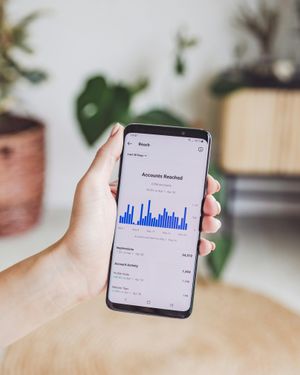Our sales teams face a lot of pressure. They need to reach out to X amount of people on a daily, weekly and monthly basis. So, what do they do? They front-load the CRM with raw customer data from sources like LinkedIn, Apollo or even a simple spreadsheet.
However, there’s a problem – the raw customer data becomes invalid or outdated over time. And that “problem” never goes away. In fact, the more data you collect, the worse it gets. That’s why CRM data hygiene is pivotal for the success of your sales team and company.
We’ve put together this guide to break down everything you need to know about data cleansing within your CRM.
What’s CRM Data Cleansing?
In a nutshell, CRM data cleansing is the process of making CRM data usable by eliminating invalid, duplicate, inaccurate and incomplete information. That means creating a standardized system for data entry (syntax and formatting), locating redundancies and filling in missing fields.
Your customer database informs many aspects of your business operations, especially sales and marketing. And with a streamlined CRM, you can quickly draw insights and take action throughout the entire customer journey.
Plus, it gives your sales team a competitive edge since they can effectively trust every piece of data at their fingertips – knowing that each email or call will be to a relevant lead.
The goal of CRM data cleaning is twofold: make your CRM more effective and empower your team to operate with efficiency and confidence. With a clean CRM, the guesswork is eliminated. Your team can focus on what they do best: building relationships and closing deals.
If not, your sales effectiveness is at risk. When sales representatives attempt to reach out using inaccurate contact information, it can result in bounces which, in turn, affect your sender reputation.
Outdated information also leads to missed opportunities. For example, if a sales representative has an outdated phone number for a prospect, they may miss the opportunity to follow up on a promising lead.
At the end of the day, your team starts spending more time trying to juggle the “dirty” CRM data, growing increasingly frustrated and risking burnout.
If you’re in revenue leadership, CRM data that hasn’t been cleansed has an impact on your revenue, as well. Your people can’t reach the right decision-makers, their campaigns aren’t as effective and you start to feel it on your productivity and efficiency first, only to see a decrease in revenue growth by the end of the quarter.
The best way to mitigate these issues is to be proactive about CRM data cleansing.
What Makes CRM Data Go Bad?
A recent survey from Salesforce found that roughly 90% of CRM data is bad and decays at a rate of about 70% per year. But why does this happen? While time is the biggest factor, the reasons can be broken down into these categories:
- Human Error: Mistakes made during data entry, such as typos or incorrect information.
- Data Duplication: When the same contact information is entered into the CRM system multiple times, it creates duplicates, leading to confusion and inefficiency.
- Outdated Information: People change jobs, titles and contact details. Without regular updates, CRM data quickly becomes outdated.
- Incomplete Data: Sometimes, sales reps only pull in limited info on leads. It can be a missing name, contact details or preferences, etc. that lowers the overall quality of the data.
- Lack of Standardization: Without a standardized format for data entry, variations in data syntax or formatting can cause inconsistencies and errors in the database.
- Poor Data Management Practices: The absence of regular data cleaning and maintenance practices can lead to a gradual accumulation of bad data.
- Integration Issues: When CRM systems are not properly integrated, it can result in incomplete or inaccurate data transfer.
The Principles of CRM Data Cleansing
Data cleansing goes beyond tidying things up in your CRM. It’s about setting a solid foundation for a reliable and actionable system that empowers both your sales team and business. Whether you’re just starting with your CRM or migrating to a new one, these are the core principles of data cleansing:
Validity: The Foundation of Data Integrity
At its core, validity concerns whether your data aligns with the specific format and rules predefined for its purpose.
For example, an email field in your form expects a string that matches the "[email protected]" format. Data that doesn't conform to these expectations is flagged for correction, ensuring that what you collect is usable and reliable.
Beyond simple email validation, this principle covers a broad spectrum of checks, such as ensuring numerical data falls within expected ranges and that mandatory fields are not overlooked before entering information about a contact.
Accuracy: Ensuring Data Reflects Reality
While validity ensures that data fits the right format, accuracy dives deeper, verifying that the data accurately represents real-world information. It's the difference between a phone number that looks right and one that actually connects to your customer.
Accuracy in CRM data impacts everything from customer engagement to the effectiveness of your marketing campaigns, which means that ongoing efforts to verify and update records are paramount.
Consistency: Uniformity Across Channels
Data consistency is about ensuring uniformity in how information is recorded and stored across your CRM system. Inconsistencies, such as varying formats for phone numbers (one with a country code and one without) or job titles, can lead to misinterpretation and missed opportunities.
Establishing standard formats and adhering to them across all data entry points helps maintain a clean, navigable database that supports accurate analysis and segmentation.
Completeness: Leaving No Field Behind
A CRM database is only as valuable as the completeness of its records. Missing information can create gaps in your understanding of customers, hindering personalized marketing efforts and accurate forecasting.
This doesn’t just improve your database’s utility but it also helps with more accurate decision-making across your organization.
How to Effectively Implement a CRM Data Cleansing Strategy
With the principles in mind, let’s take a look at what steps you should take when implementing CRM data cleansing in your business:
Step 1. Inspect and Audit Your CRM Data
Begin with a thorough data profiling to get an overview of your CRM data's health. This involves analyzing data distributions, identifying outliers and understanding the relationships between data fields.
For instance, a SaaS company might use data profiling to discover that many customer records lack demographic information critical for personalized marketing campaigns. Tools like Talend can automate this process and offer insights into data issues without too much manual effort.
Then you need to conduct a comprehensive audit focusing on common data quality issues such as inconsistencies, formatting errors, redundancies and missing values.
For example, you might find that contact records are inconsistently formatted, with job titles ranging from "VP Sales" to "Vice President of Sales," creating segmentation challenges.
Auditing tools integrated within CRM systems or specialized software like Insycle can pinpoint these issues, making your cleansing efforts more targeted.
Step 2. Clean Up Your CRM Data
Now, you’re at the fun part – cleaning the data. Typically, it will fall into one of these categories:
Removing Duplicates
Using CRM functions or dedicated tools, you can identify and merge duplicates. Salesforce, for example, offers built-in duplicate management tools.
Correcting Data
Address incorrect and irrelevant data by standardizing formats and removing outdated information. For example, make sure each name entry follows the same format (e.g. LastName, FirstName). You also need to watch for redundant fields such as “Location” and “Company HQ,” which could refer to the same info.
This can also refer to incorrect or unverified email addresses, an issue in which you’d use Findymail’s B2B contact information tool.
Findymail serves two purposes: to find verified email addresses for your contacts and keep them fresh in your CRM. It integrates with most CRMs (from Salesforce and Hubspot to Copper and Zoho) and allows you to maintain a fresh pool of email addresses, so your outreach stays relevant.
Plus, if your reps are using LinkedIn Sales Navigator for prospecting and building lead lists, Findymail will help them extract accurate email addresses!
Filling Missing Data
When it comes to incomplete entries, you can leverage data enrichment services to fill in gaps. There are services like Clearbit and ZoomInfo to automatically enrich and update your CRM records with essential contact details.
Step 3. Make Sure the Data is Clean
After cleansing, reassess your CRM data to make sure all corrections have been applied effectively. Essentially, you’re going back to step one to inspect and audit the data.
Of course, this step will also include manual verification.
At this stage, you can identify common issues that reoccur in your system to rectify them with a more permanent solution. For example, you can implement processes that validate the completeness and accuracy of your data.
Step 4. Implement Ongoing Data Management Practices
You will always collect more data as you find more leads, so CRM data cleansing is a continuous process. That’s why it’s important to put an ongoing data management system in place.
Here are a few tips:
Establish Continuous Auditing and Cleaning Routines
Schedule regular data quality reviews to preemptively address emerging issues. Automate these processes where possible to ensure consistency and reduce manual workload.
Improve Data Entry Processes
Implementing stringent data validation rules upon entry can significantly reduce the occurrence of errors.
For example, you can use form validations that require all phone numbers to be entered in a standard format. This way, even if someone (or something) tries to enter an incorrectly-formatted piece of information, they’ll be prevented and the filter will “catch” them before they can sully your CRM data.
Securing Stakeholder Buy-in for CRM Data Cleansing
Use your CRM's analytics tools to track the effectiveness of your data cleansing efforts, demonstrating the value of these initiatives to senior stakeholders.
Regularly share success stories and metrics, like the improvement in lead conversion rates following a data cleansing campaign, to underline the importance of clean data.
Choosing the Right Tools and Integrations for CRM Data Cleansing
We’ve mentioned there are tools and integrations you can use to help automate and standardize your data cleansing processes.
However, there are many available, so here are some considerations when choosing the right ones:
Assess Your Needs
Start by identifying the specific data quality challenges you face. Are duplicates your main issue? Or is it inconsistent data formats, outdated information or incomplete records?
Findymail fills in missing contact details with actionable email data.
Find new email addresses (for incomplete records) or verify the email addresses already in your system with the most accurate B2B contact information tool!
Consider Tool Functionality
Look for tools that offer features addressing your specific needs. If your primary concern is deduplication and merging contacts, WinPure Clean & Match offers a simple user-friendly interface and effectiveness in de-duping and correcting data across various platforms.
Integration Capabilities
Ensure that any tool you consider can seamlessly integrate with your existing CRM and other data systems.
For CRM-specific data cleansing, DemandTools offers modules dedicated to improving data quality within Salesforce and Microsoft Dynamics CRM, making it a strong candidate for businesses using these platforms.
Support and Ease of Use
The right tool should not only be powerful but also intuitive. You don’t want your team getting frustrated because they can’t use the tools properly.
Also, consider the level of customer support and community resources available to help you maximize the tool's value.
Scalability
Think about your goals and where your business will be 5 and 10 years down the line. Look for tools that can effectively grow with your business.
Is Your CRM Data Cleansing Tool Cost-Effective?
Look at the pricing structure of each tool and weigh it against the features offered. Some tools may offer free versions with limited capabilities that are suitable for small businesses, while others may require a subscription for more advanced features.
Security and Compliance
Especially important for businesses dealing with sensitive data, make sure the tool follows data protection regulations and offers robust security features to safeguard your data.
CRM Data Cleansing Best Practices
Finally, let’s look at some best practices when you go to implement a data cleansing strategy for your organization.
Understand Your Key Data Points
Start by identifying the data points that most significantly impact your business goals. Often, companies try to aggregate every possible data type, ending up with too much data that renders them ineffective. Additionally, your processes and tools will depend on the type of data you’re dealing with.
For example, if your current goal is to increase customer retention by 20% within the next year, you’d look at the essential data points (demographics, contact information, etc.), as well as purchase history and intent data.
You wouldn’t necessarily need technographic information.
Use Reliable Data Sources
Whenever possible, get your data from reliable providers that also provide re-verification.
For data coming from multiple sources (e.g., you have two data enrichment tools with overlaps in the data types they source), establish a process for cleaning and integrating this data to minimize inconsistencies and errors.
Regular Data Audits and Updates
Implement a routine for conducting data audits to identify inaccuracies, duplicates and outdated information. Regular updates are essential to keep your CRM data relevant and useful.
For example, your data audit plan might consist of the following items:
- Frequency: Choose how often to conduct the CRM data audits. For example, you might conduct them twice a year.
- Data Audit Team: Form a cross-functional team responsible for conducting the data audits and addressing any issues.
- Audit Parameters: Define specific parameters and criteria for the data audit, including criteria for identifying inaccuracies, duplicates and outdated information. You might check for incomplete records and validate contact information.
- Data Audit Tools: Choose your tools and CRM functionalities that will be used for the CRM data cleansing. Aim to identify patterns and trends.
- Press Play: During the data audit, the team should systematically review CRM records, compare them against established criteria and conduct data validation checks. They should also flag records that show issues.
- Resolution and Cleanup: After the audit, prioritize the issues based on severity and impact on your operations or results. Then, have the team work together to address the issues and discuss how they can be prevented in the future.
- Documentation: No one likes reporting, but it’s a must. The team should maintain documentation of audit findings, actions taken and outcomes.
Finally, with the audit done, don’t forget to integrate a feedback loop that will improve your data quality with each performed audit.
Effective Contact Segmentation
By segmenting your contacts more effectively, you can boost engagement and conversion rates.
For example, let’s say you’re in the B2B SaaS space. You could decide to segment based on contacts’ industries, company size and purchase history. This would lead to the creation of four segments such as customers in the technology sector, customers in the healthcare sector, enterprise-level companies and repeat customers.
Each segment would get content and campaigns tailored to them, from case studies to outreach.
Educate Your Team on CRM Data Cleansing
Finally, make sure that everyone who interacts with your CRM understands the importance of data hygiene. This includes training on entering data correctly, recognizing the signs of dirty data and taking steps to maintain data quality.
It’s always a good idea to set data quality KPIs, so you have actual metrics your team has to adhere to. Of course, this should be prefaced with training that clarifies why it’s important and prevents the age-old issue of representatives procrastinating CRM updates.
Clean Your Data, Strengthen Your Sales
There’s no doubt customer data is pivotal for business success – but it’s the quality of the data that matters most.
With a proper CRM data cleansing system in place, you can trust that the information you have will get you the results you want. The ultimate goal is a CRM with accurate, complete and actionable data your team can start using today to find more opportunities, build more relationships and close more deals.
And when you need reliable, rich email data, sign up for Findymail and supercharge your CRM.






